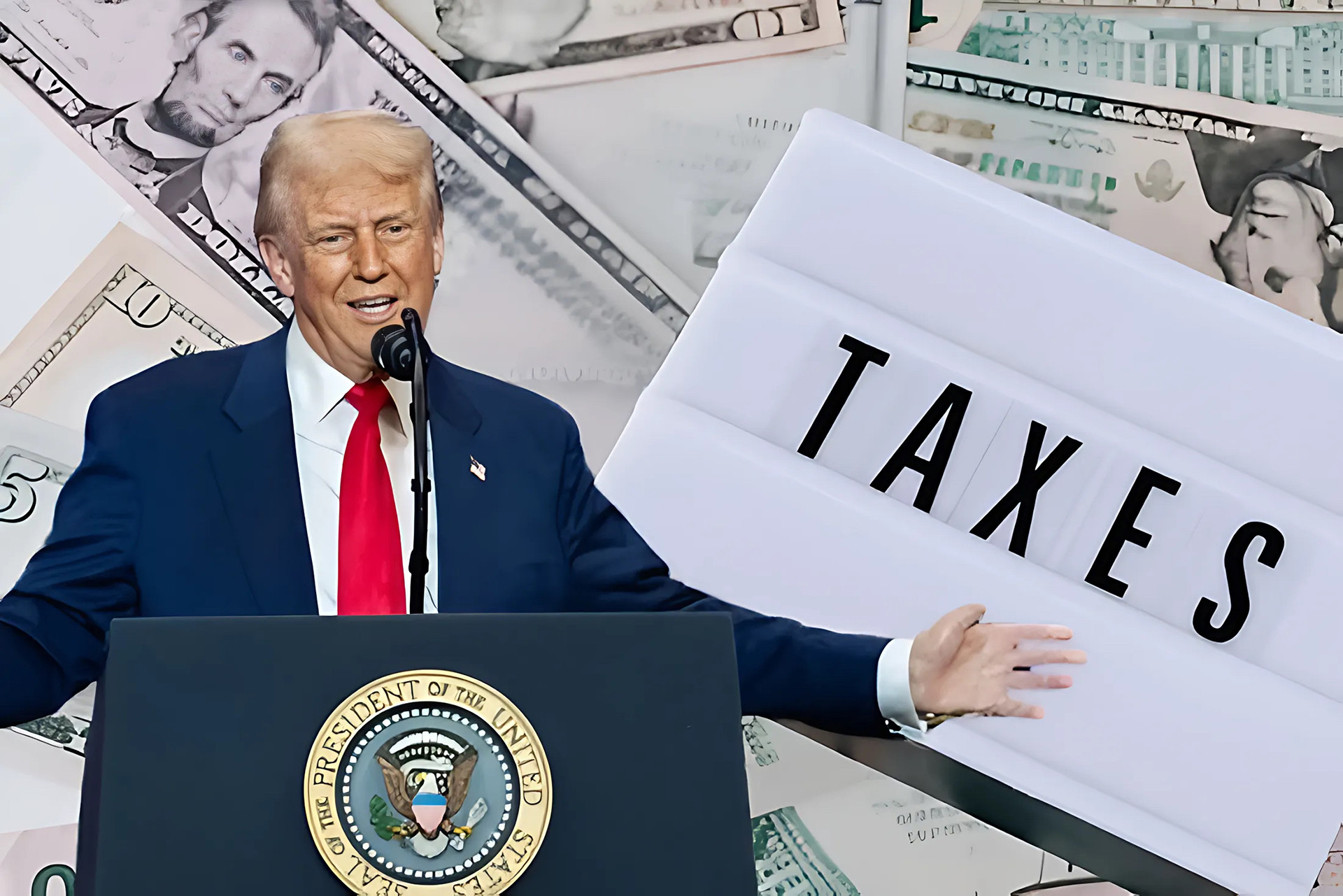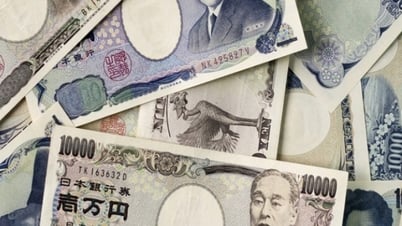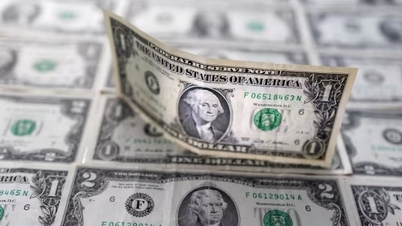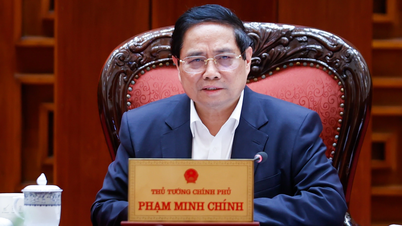President Donald Trump unexpectedly announced a temporary suspension of high import tariffs on most of America's trading partners for 90 days, but increased the corresponding tariff on China to 125%. This has caused the world to "relieve a burden". Looking back at the past "suffocating" days, it can be seen that if Mr. Trump does not change his decision, the world will enter an extremely fierce vortex, and global trade will face an uncertain future.
Unprecedented tariff plan
On April 2 - the day that US President Donald Trump considered America's "Liberation Day", the White House announced an unprecedented tariff plan with Mr. Trump's ambition to reshape the global trade order.
Specifically, from April 5, a minimum tax rate of 10% will be applied to all goods imported into the US from more than 180 countries and territories. But the real turning point will come in a few hours, during the trading session on April 9 in the US (early morning of April 10, Vietnam time), when higher reciprocal tax rates, ranging from 11% to nearly 50%, will officially take effect for about 60 countries/territories that are considered to have large trade surpluses with the US.
The culmination was a 104% tariff imposed on China, in response to Beijing's announcement of a 34% retaliatory tariff on US goods.
China is the country that could face the highest tariffs, with a cumulative 104% from April 9, on goods worth hundreds of billions of dollars, from electronic components to consumer goods. The European Union (EU) faces a 20% tariff, affecting the auto, wine and agricultural industries. Japan and South Korea face 24% and 25% tariffs, respectively, affecting the technology and auto industries.
Vietnam faces a 46% tax rate, and key products such as textiles, electronics and wooden furniture... may be severely affected. Cambodia faces a 49% tax rate, the highest in Southeast Asia.

However, Mr. Trump left open the possibility of postponing, rolling back or reducing tariffs if countries agreed to negotiate and make concessions. With China, Mr. Trump appeared open but firm, emphasizing that Beijing must proactively contact to reach an agreement.
Japan and South Korea, two close allies, are also expected to soon reach negotiations to avoid high tariffs. Meanwhile, Vietnam has sent a diplomatic note requesting a tax postponement for negotiations.
The immediate impact on global markets following the US tariff decision was clear. Just days after the announcement (April 2), the US stock market lost several trillion dollars in capitalization. Asian stocks, from Tokyo to Ho Chi Minh City, plummeted, while gold hit a new high of $3,169 an ounce as investors sought safe havens. Commodity prices such as steel, aluminum and oil fluctuated sharply, reflecting the disruption to supply chains.
For China, the 104% tariff threatens to severely hurt its exports, while the EU faces the risk of rising inflation due to soaring costs of US imports. Southeast Asian countries fear losing their competitive edge to Mexico and India, which are less affected.
US strategic calculations and global risks
The Trump administration uses tariffs not only as an economic tool but also as a strategic weapon to force countries to reorient trade in line with Mr. Trump's "America First" wishes.
It is likely that countries will have to significantly reduce tariffs on US goods, make commitments to increase imports, and strengthen cooperation on minerals, trade, and control of goods origin.
In a recent development, Beijing banned the export of dozens of rare earth elements to the US from April 10. This could push up the cost of high-tech production to alarming levels, affecting the operations of major US technology and defense corporations.
In addition, a strong US dollar and America's ability to control the global financial system are also things that Mr. Trump often mentions.
The US’s strategic calculations focus on three goals: reducing the trade deficit, bringing manufacturing back home, and strengthening its position as an economic superpower. Mr. Trump argues that tariffs will force countries to buy more American goods, while also encouraging companies like Apple and Nike to move their supply chains to the US.
But experts warn that the policy could backfire. The Peterson Institute for International Economics estimates that the average American family will spend an additional $2,600 a year due to rising prices, while inflation could put the Fed in a difficult position and slow down US economic growth.
The world economy faces the risk of fragmentation, as countries move from free trade to protectionism and localization of production. The EU and Japan can strengthen trade links with each other to reduce dependence on the US, while small countries must diversify their markets to avoid losses.
The global economic order has indeed come to a crossroads. But it also signals the fact that multilateral trade agreements such as the WTO are gradually losing their role, giving way to bilateral agreements following US standards. Countries will have to learn many lessons from such an uncertain world, in order to be ready to respond to unpredictable situations in global trade.

Source: https://vietnamnet.vn/cuoc-chien-thue-quan-the-ky-ong-trump-dua-the-gioi-vao-vong-xoa-moi-2389421.html




![[Photo] The Government Standing Committee works with ministries and branches on the real estate market situation.](https://vphoto.vietnam.vn/thumb/1200x675/vietnam/resource/IMAGE/2025/5/24/e9b5bc2313d14c9499b8c9b83226adba)


![[Photo] Ho Chi Minh City holds funeral for former President Tran Duc Luong](https://vphoto.vietnam.vn/thumb/1200x675/vietnam/resource/IMAGE/2025/5/24/9c1858ebd3d04170b6cef2e6bcb2019e)



















![[Photo] Party and State leaders visit former President Tran Duc Luong](https://vphoto.vietnam.vn/thumb/1200x675/vietnam/resource/IMAGE/2025/5/24/960db9b19102400e8df68d5a6caadcf6)


































































Comment (0)